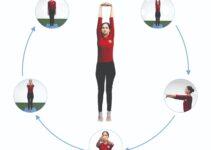Tadasana meaning
Tadasana is the foundation of all standing yoga poses. Tadasana helps to correct the alignments of other yoga asanas. Mountain pose is the yoga that teaches you the art of standing and the art of walking. If Tadasana is practised with proper steps and procedures, one can experience numerous health benefits. Here, we will discuss the easy steps, health benefits, precautions and contraindications of practising the pose.

Important facts about Tadasana
- Tadasana comprises two words: ‘tada’ means mountain, and ‘asana’ means yoga posture.
- Tadasana is a Sanskrit word pronounced as ‘tah-DAHS-anna’.
- The pose type comes under ‘standing one’.
- Targets: the entire body.
Health benefits of Tadasana
- This is the best yoga pose to improve posture, postural defects, and body alignment.
- It re-energizes the entire body’s nerves and muscles, thus boosting energy and removing fatigue.
- Tadasana helps in shedding extra unnecessary fats and gives the body a slim and fit look.
- It also removes pain, especially back pain.
- It is highly beneficial for computer sitting jobs as practising the standing poses invigorates the entire body.
- It strengthens the thighs, buttocks, legs, and spine, helping increase children’s height.
- It cures sciatica.
How to do Tadasana steps?
Step 1
- Stand a few inches apart by keeping your feet parallel.
Step 2
- Inhale and raise your arms upward before the head. Interlock your fingers.
Step 3
- Now, come on your toes and stretch from toes to fingers, maintaining the body’s balance.
Step 4
- Maintain the pose as long as you can with normal breathing.
Step 5
- Exhale and come to the original position. Do 2-3 rounds.
Beginners’ tip
Practising the pose, as mentioned above, requires stability and stamina. However, beginners can start simply by standing and keeping their hands beside their thighs. After that, the arms can be raised upwards, and one can maintain the pose without coming on toes. Beginners can also start the carriage with the help of a wall in order to get support.
Precautions
- Weight should be distributed evenly on both feet.
- Your heels, sacrum, and shoulder blades should be on the exact same alignment.
- While maintaining the pose, your focus should be on a particular point.
Contraindications
- Back pain
- Dizziness
- Headache
- Insomnia
- Low blood pressure
- Fatigue
- Depression
Preparatory poses
- Yogic Sukshma Vyayama
- Rotation of hands
- Rotation of shoulders
- Knees movement
Counter poses
Tadasana variations
- It can be performed by having distance between the feet.
- For beginners, performing the pose by taking help against the wall is better.
- It can also be performed on a chair.





